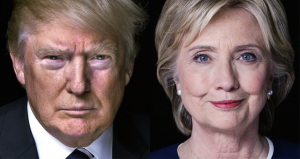As online learning continues to expand across the academic landscape, many instructors are challenged to take their expertise in teaching classes face-to-face and apply it to the domain of digital education. Teaching online is more than simply uploading in-class materials onto your course LMS–it can require several hours of preparation and time spent converting material into a format that will be suitable as well as accessible.
One of the great advantages of Globalyceum is its function as a digital platform where all course materials are designed to work in a face-to-face course, as well as in a hybrid or online environment. Students engage with the material in much the same way as they would in a classroom setting and instructors can use many of the platform features to ensure active learning in their hybrid or fully online course. The ability to use the same platform for all of your courses and their various formats cuts down significantly on the time you spend preparing class materials and allows continuity for both instructors and for students.
Read/Study Strategy
As online students are required to take a great deal of initiative and control over the pace and success of their own learning, the read/study strategy deployed by Globalyceum is a great way to ensure that your online students are understanding the material and using active reading strategies. Each essay includes core concepts and key terms that help students engage with the material, and the assessment bank for each unit can be customized to fit the specific reading and comprehension level of your students. The use of frequent assessments is an especially good strategy for online learning because it ensures that students are keeping up with the coursework.
LMS Integration or Standalone
If you are already using your institution’s LMS as the shell for your online course, Globalyceum materials can be integrated into your existing course, and the grades from assessments and assignments will be automatically transferred into your gradebook so that you can manage the course in one place. Alternatively, you have the option of setting up your course entirely on the Globalyceum website, as its range of features allows you to upload your own instructions and materials to create a fully online course.
Alignment
In an online course, the alignment of learning objectives and assessments becomes very important, as instructors do not have class time to make connections between topics and course themes. Globalyceum units all contain student learning objectives for both content and skills that can be used to write module-level learning objectives. Readings and assignments on the platform align with these objectives so that it is clear to students how they will be able to meet course and module level objectives.
Accessibility
One difficulty in converting existing course materials to online learning platforms can be ensuring accessibility. All Globalyceum materials are ADA compliant — all videos have closed captioning and audio recordings are provided for all core essays and topical essays.
Active Learning Manual
Writing assignments for your online course can be challenging and time consuming, as instructions need to be very clear and the relationship to course objectives must be clearly spelled out. The Globalyceum Active Learning Manual activities are designed for both online and face-to-face classes. The “Problems” feature of each chapter in Globalyceum’s platform contains background information that gives students the context of the unit material, as well as clearly organized and scaffolded assignments where students evaluate different kinds of primary sources. Short-response questions and additional documents for analysis are some of the other features that can be used to ensure your course is as “active” as you want it to be.
Learner-Learner Interaction
Without classroom time, it is important to provide opportunities for learner-learner interaction in online courses. One common and effective way to do this is to include discussion threads in weekly modules so that students have a way to discuss, debate, and engage with the material and learning objectives at hand. Instructors can create their own discussion threads in the Activities and Resources section. The assessment bank of short-answer questions for each unit provides a great source of discussion prompt questions, as each question carefully relates to the unit readings.
Composition
One struggle in online classes is finding ways to improve student writing before the time comes for them to submit their first assignments. The Globalyceum Composition Assignments work extremely well in an online course, as students can follow the scaffolded writing instructions, view examples, and watch instructional videos. A great strategy in an online class is to assign one or more composition assignments and have students submit the component parts of an essay throughout the semester. Scaffolding skills in this way means that students have an opportunity to practice what they learn and receive feedback on their thesis writing, outline strategy, and essay composition before submitting a final paper or exam.
Bringing it All Together
Thanks to Globalyceum’s innovative approach to online education, you don’t have to choose between an interactive course environment and the convenience and flexibility of online learning. Our platform is designed not only to significantly enrich the online course experience for students, but also to adapt to your needs, styles, and standards as an educator. Using Globalyceum’s strategies for student involvement will offer new learning opportunities for those in your classroom and allow you as the instructor to more efficiently convey the materials and lessons that you cover in your courses.



